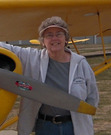Sarah Byrn Rickman's Blog, page 4
September 24, 2021
The WAFS/WASP Story Began for Me, at IWASM
IWASM, the International Women’s Air & Space Museum, is hosting the launch of my newest book—Teresa James’s biography—October 20 at 7 pm Eastern Time, 5 pm Mountain Time. Join me and many of my friends and fellow advocates of the amazing women pilots who flew for our country in World War II.
Mark Wednesday, October 20, on your calendar. Teresa James WAFS Pilot: Gear Up/Gear Down—a P-47 to Newark debuts that day!IWASM is where I met my first WASP, Nadine Nagle. It was January 1990. Joan Hrubec, then administrator of IWASM, introduced us. The short story here is 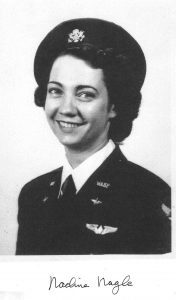 both Nadine and Joan became very close friends of mine—friendships that lasted until their passing, Joan in 2007 and Nadine in 2018.
both Nadine and Joan became very close friends of mine—friendships that lasted until their passing, Joan in 2007 and Nadine in 2018.
They introduced me to the WASP story. Through them, I realized how important it was to TELL that story. For this gift, I’m eternally grateful to them and to IWASM.
Joan schooled me in the history of women in aviation. She was a walking encyclopedia. I studied under her, soaking up the bigger story—not just the WASP story, but the history of women’s aviation that led to Nancy Love’s WAFS and Jackie Cochran’s WASP in 1942 and beyond … to the historic happenings in the ’70s … and to modern day. If I had a woman-in-aviation question, I called Joan.
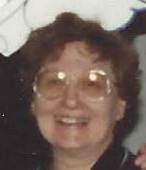 On Film: Twelve Women in Aviation Stories
On Film: Twelve Women in Aviation StoriesJoan and I worked together for IWASM from 1990 to 1994. In that time, she and I produced a series of 12 hour-long Women In Aviation lecture/panel programs, filmed in the studio with a live audience, and then aired on the Community TV Channel of the Miami Valley Cable Council. Our first program, November 1990, featured IWASM President Nancy Hopkins Tier.
Joan HrubecNancy was a Charter (founding) Ninety-Nine in November 1929. In 1942, at age 33, she could have qualified for the WAFS, but she had two young children at home and opted not to apply. Instead, she joined the Civil Air Patrol, the civil defense program launched on Dec. 1, 1941, right before Pearl Harbor.
Nancy Hopkins Tier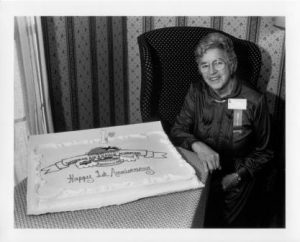 Throughout WWII, Nancy served her country as a CAP patrol pilot from her home in Connecticut. She became the first female Civil Air Patrol colonel as well as Wing commander.
Throughout WWII, Nancy served her country as a CAP patrol pilot from her home in Connecticut. She became the first female Civil Air Patrol colonel as well as Wing commander.
In January 1991 we featured IWASM Executive Vice President Bernice “B” Steadman. B just missed serving in WWII, but 15 years later became one of the Mercury 13. They are the women who, in 1961, went through the same testing as did our Mercury 7 astronauts back in the late 1950s. The testing was to determine a woman’s adaptability to space travel.
Bernice “B” Steadman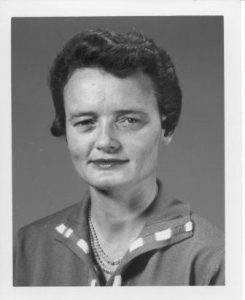 A Panel of 20+ Female Airline Pilots
A Panel of 20+ Female Airline PilotsMarch 1991, more than 20 women airline pilots came to Centerville for the panel discussion presented by the International Society of Women Airline Pilots. “ISA+21” was born with twenty-one pioneering female airline pilots in 1978 and has grown to represent women in over 90 airlines and 35 countries.
Over four years, with programs in November, January and March, we featured several panels of women flyers—a WASP panel and three corporate pilots were just two of them—well as individual women pilots with fascinating stories including Emily Warner and Patti Wagstaff.
IWASM was located in Centerville, Ohio, in the 1990s when I worked with them. When they moved to Cleveland in 2000, I became an “advisor” one of a core group for whom IWASM is important. We support and “advise” them when they ask. I still serve in that capacity.
IWASM Now Resides in ClevelandThrough IWASM, I was blessed to get to know many of the earlier women pilots who have now passed on, some of them IWASM board members like Charter Ninety-Nines Faye Gillis Wells and Nancy Hopkins Tier as well as Ninety-Nines B Steadman and Barbara Evans. I met my first WAFS and other mentor, Nancy Batson Crews, as well as my first WASP, Nadine, through IWASM. And I met seven of the Mercury 13.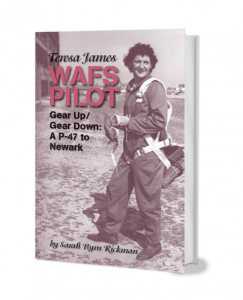
I knew the Dayton-area women pilots and friends who helped make IWASM a fixture in Centerville. And when the museum moved to Cleveland, I got to meet and know the women who made and still make IWASM thrive: Marcy, Connie, executive director Sara Fisher … and many many more!
My thanks to IWASM for instilling in me the history of women in aviation AND now for helping me launch Teresa James WAFS Pilot: Gear Up/ Gear Down– a P-47 to Newark.
Join us on October 20 by zoom: Click here to register.
The post The WAFS/WASP Story Began for Me, at IWASM appeared first on Sarah Byrn Rickman.
September 17, 2021
“Teresa James WAFS Pilot”
When it comes to flying, Teresa James was one of the best. She mastered 26½ tail spins followed by a series of loop-ti-loops in a vintage Travel Air OX-5 to become a 1930s barnstorming stunt pilot at age 21.
She mastered 26½ tail spins followed by a series of loop-ti-loops in a vintage Travel Air OX-5 to become a 1930s barnstorming stunt pilot at age 21.
Teresa was number eight invited to join the 28 original WAFS—the Women’s Auxiliary Ferrying Squadron. These were the women pilots recruited by Nancy Harkness Love, early in World War II, to fly for the Ferrying Division, Air Transport Command.
The WAFS were America’s first squadron of women pilots. All of them were long on experience when they were hired, in 1942, to serve as civilians. Their initial job was to ferry (move) small Army trainer aircraft from the wartime factories to the flight training schools. But their biggest contribution was to come in 1944 when they were called on to ferry fighters—the high-powered pursuit aircraft that ultimately would win the war for the U.S. and its Allies.
Third Woman to Fly the P-47 ThunderboltTeresa James was the third woman to fly the P-47 Thunderbolt—America’s biggest, heaviest 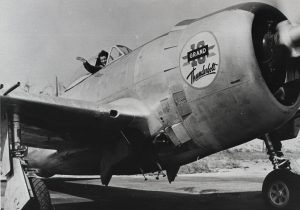 fighter aircraft in WWII.
fighter aircraft in WWII.
“I was scared to death of flying it,” Teresa said. “The cockpit had only enough room for a single pilot—me—so my first flight was a solo! I’d heard the guys discussing the flight characteristics of this 14,500 pound, 2000 horsepower, flying arsenal! I’d learned on something that had about fifty.”
July 5, 1943—her date with destiny. Her first pursuit flight. It would be the first of many.
“Take It Up and Practice Stalls and Spins”“There stood Captain Bing on the wing, waiting to give me a verbal checkout on pre-flight, cockpit, and emergency procedures. Then, satisfied that I had done my homework, he wished me luck and told me to take it up and practice stalls and spins.
“His parting shot was ‘After takeoff, you’ll be twenty miles out past New Castle before you get the gear up.’”
Teresa’s full description of her flight is found in Teresa James WAFS Pilot, pages 78-81.
“That’s when I found out the mystique around flying the big ‘Jug’ [its affectionate nickname] was just a lot of guy stories. The P-47 is a real pussycat, but with great claws and silky whiskers. What she’s saying is, ‘Pet me gently!’”
Next for Teresa Was the P-51 MustangNot long after, TJ became the fourth woman to fly the queen of the pursuits, the P-51 Mustang.
By fall 1944, there were nearly 100 women ferry pilots, now called WASP, qualified to fly those pursuits from the factories where they were built to the shipping docks on the Atlantic and Pacific coasts. The majority of the aircraft went to Newark, New Jersey, where they were loaded aboard WWII Liberty ships and sent to England to fly against Hitler’s Nazi Germany.
Those small, swift, muscular aircraft provided—in 1944—the vital, and until then missing protection that was instrumental in the success of our bombing in air raids over Germany. That’s how that half of the war was won!
Still, given Teresa’s amazing life and flying career, her most lasting legacy may be this:
An Inspiration to Today’s Young Women“Her story and her vitality still serve as an inspiration to today’s young women,” says Julia Lauria-Blum, one of TJ’s closest friends in her later years. Julia’s two daughters were young teens when they met Teresa.
In 2018, almost as if Julia was channeling me, I changed the focus of my writing. Two of my fellow writer friends, former teachers, told me point blank that the audience who most needs to read the stories of these incredible women pilots of World War II is today’s young women—the girls attending our Middle Schools, High Schools, and STEM classes.
“Teresa and the others are role models,” both said, echoing Julia. “These young women are our future. That’s who you need to write these WAFS and WASP stories for.”
I listened.
In 2018, Filter Press published BJ Erickson WASP Pilot—the first of my Young Adult-focused WAFS/WASP biographies. Nancy Love WASP Pilot followed in 2019, also from Filter Press. Last year, Flight to Destiny Press published Betty Gillies WAFS Pilot.
This year, 2021, make way for Teresa James WAFS Pilot: Gear Up/Gear Down—a P-47 to Newark.
Enjoy!!!
My heartfelt thanks to IWASM — the International Women’s Air & Space Museum, Cleveland, Ohio — for sponsoring this book launch. When IWASM Administrator Joan Hrubec and I visited Teresa in Lake Worth, Florida, in March 2000, we forged a bond between Teresa, the WAFS, and the museum. Thanks to IWASM Executive Director Sara Fisher for keeping that connection alive.
The post “Teresa James WAFS Pilot” appeared first on Sarah Byrn Rickman.
September 2, 2021
Meet Original WAFS Dorothy Fulton
No pilot expects the propeller to drop off an airplane. But that is how nineteen-year-old Dorothy Fulton came to be hanging, without power, 2,000 feet in the air over populous Teaneck, New Jersey, her hometown.
“I heard the motor ‘rev’ — that means speed up,” Dorothy told reporters. “I cut the switch. That’s drilled into 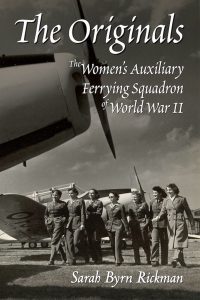
us at school. Then I saw the propeller moving away from the ship. I should have been scared, but I didn’t have time. I just had time to lift the wing so the prop could get past. If I hadn’t, it would have torn the wing apart and I’d have crashed.
“I dropped the nose of my plane to keep up my flying speed — eighty miles an hour. The challenge was to stay in the air for five miles, the distance to the airport. You have to know your angles, and we learned gliding angles well at school.” Spoken like a true pilot, and Dorothy Johanna Fulton was just that — a real, honest-to-goodness pilot with the cool head under pressure to prove it.
DOROTHY FULTON IS THIRD FROM LEFT.
BROKEN CRANKSHAFT, SHEARED PROPELLERThe propeller crankshaft had broken in midair and the propeller sheared off. The errant propeller ended up in a backyard on Bell Avenue. Dorothy managed to hold the airplane aloft long enough to make it back to Bendix/Teterboro Airport where she landed it without further mishap.
Dorothy planned to go looking for the propeller the next day, but the man who lived in the Bell Avenue house retrieved it and sent it over to the airport where he figured it belonged. Said Dorothy, “The only thing I was worried about was that it might have hit somebody. I’ve made plenty of forced landings before.”
Amelia Earhart flew the Atlantic in 1928 — as a passenger. Immediately she became an international heroine. In 1932, AE — to prove to herself and to the world that she could do it by herself — flew the Atlantic solo. In doing so, she inspired dreams of flight in countless young women of future generations. Dorothy —13 in 1932 — soon would soon become an aviatrix like Amelia.
A TWO-YEAR HIGH SCHOOL FLYING COURSEAs fate would have it, in 1933, Teaneck High School became the first high school in the country, possibly in the world, to offer students a two-year flying course that allowed them to work toward a private pilot’s license — for credit. The school’s founder and instructor was Major Arthur G. Norwood — a World War I pilot, one-time operations manager of the Bendix/Teterboro Airport, and local aviation enthusiast.
Dorothy — with a few flights in a neighbor’s small airplane under her belt — enrolled in the two-year aviation course at the beginning of her junior year at Teaneck High School. To be eligible she had to have her parents’ permission, pass the required physical, and have exceptional grades. Friends and neighbors were horrified that the Fultons would allow their eldest daughter to fly, let alone enroll in an aviation course, says Dorothy’s younger sister, Harriett “Honey” Parker. “They didn’t think such pastimes were appropriate for a young lady. But our parents let us make our own choices.”
Honey Fulton Parker is a personal friend of this author/blogger. It is she who related Dorothy’s story to me.
DOROTHY EARNS PILOT’S LICENSE AT 17Seventeen-year-old Dottie Fulton soloed on March 27, 1936, was granted her amateur license on November 9, 1936, and earned her regular private pilot’s license on August 4, 1937. To secure her private license, Dottie and Major Norwood took off from Teterboro and flew to Roosevelt Field on Long Island.
Dorothy had 52 solo hours when she passed her flight test. Major Norwood told reporters who came to interview them that Miss Fulton “was right at the top of the class.” She was the second girl in Norwood’s classes to get her private license.
“I want to start courses like we have in Teaneck all over the country some day,” Dottie told the same reporters. “I want to teach kids who want to fly and who can’t afford the expensive schools to get up in the air and handle the airplane. Pretty soon planes will be as common as the auto.” And, she added, her next goal was 200 solo hours and her transport license.
TRANSPORT LICENSE HER NEXT GOALDorothy entered New York University in the fall of 1937 where she took special aviation courses. And she kept building her time in the cockpit with that transport license as her goal. She had her sights on her flight instructor rating as well as the transport rating. Both required 200 solo hours and she was closing in on that magic number.
The day she lost the propeller — July 10, 1938 — she was building her time with that goal in mind.
In September 1942, with America now embroiled in World War II, Dorothy received one of the 83 telegrams sent out by Nancy Love on September, 1942, asking her to come to New Castle Army Air Base in Wilmington, Delaware, to join the fledgling Women’s Auxiliary Ferrying Squadron (WAFS). Dorothy went, and became the 22nd woman to qualify for Nancy’s original WAFS. She had 1,966 flying hours.
SEE DOROTHY ON THE COVER OF ‘THE ORIGINALS’See more of Dottie’s story in my first book: The Originals. Incidentally, she is the third from the left on the cover of The Originals.
THANK YOU so much for reading my blog. Hope you’ll read my many books on the WAFS and WASP of World War II. And look for more mini-bios about the Original WAFS here.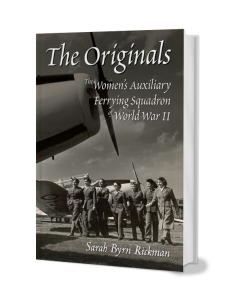
Sarah Byrn Rickman
Dorothy is featured in my first book about the women pilots of World War II — THE ORIGINALS
Click to Visit the WASP Museum website
The post Meet Original WAFS Dorothy Fulton appeared first on Sarah Byrn Rickman.
August 8, 2021
Betty Gillies, A Trailblazer in Women’s Aviation
BY KAREN BILLING, STAFF WRITER
Rancho Santa Fe News, Rancho Santa Fe, California
(Reprinted with permission)
NOV. 10, 2020 4:56 AM PT
The late Betty Gillies, a trailblazer in women’s aviation, is featured in the new young adult novel “Betty Gillies: WAFS Pilot”, a true story written by Sarah Byrn Rickman drawing on the words of Gillies’ personal diaries of flying for the United States during World War II.
Gillies was a Rancho Santa Fe resident for 38 years until she passed away in 1998 at the age of 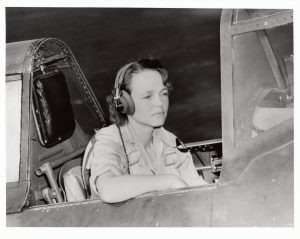 90. The book chronicles her experiences as a ferry pilot and squadron leader of the WAFS (Women’s Auxiliary Ferrying Squadron) during World War II. Gillies led a squadron of 80 women pilots whose job it was to ferry aircraft from the factories to flight schools, Army air bases and to the docks at Newark, New Jersey to be shipped abroad. Gillies served as a squadron leader stationed at New Castle Army Air Base in Delaware until the WAFS (renamed WASP or Women Airforce Service Pilots) were disbanded in December 1944.
90. The book chronicles her experiences as a ferry pilot and squadron leader of the WAFS (Women’s Auxiliary Ferrying Squadron) during World War II. Gillies led a squadron of 80 women pilots whose job it was to ferry aircraft from the factories to flight schools, Army air bases and to the docks at Newark, New Jersey to be shipped abroad. Gillies served as a squadron leader stationed at New Castle Army Air Base in Delaware until the WAFS (renamed WASP or Women Airforce Service Pilots) were disbanded in December 1944.
“Based on her meticulously kept diaries the book is a factual account of the commitment of these women pilots,” said Gillies’ daughter Patricia Astier, a Rancho Santa Fe resident. “Sarah has done a fantastic job. I hear my mother’s voice when I read the book.”
Betty Earned Her License at 21Born in Long Island, New York, Gillies started flying in 1928 while she was working as a student nurse. She earned her pilot’s license in 1929 when she was 21 years old and in 1942 she was the first pilot to qualify for the WAFS. Gillies was known to the women in her squadron as “The Mighty Atom”: Only 5 feet 1½ inches tall, she flew every twin and single-engine and single-seat fighter aircraft needed to win World War II, using specially made blocks that allowed her to reach the rudder pedals.
As Betty Huyler, she was also one of the 99 charter members of The Ninety Nines, the international organization of women’s pilots founded in 1929 and led by Amelia Earhart. Gillies would serve as president of The Ninety Nines from 1939-41.
“I met Betty once,” Rickman said. “I thought I was meeting royalty.”
Rickman has been interested in aviation since she was a 13-year-old girl reading about Earhart. A journalist for 20 years, she left the field in the 1990s to get her masters in creative writing with the intention of writing the great American novel. She veered off course, however, while she was working on publicity for a new exhibit at the National Museum of Air Force in Dayton, Ohio. As part of the project, she was able to meet and interview six of the 28 original WAFS. She felt their stories were such an essential part of history that she decided to no longer spend time trying to make up fiction when there were such important real-life stories that needed to be told.
I Wanted toWrite Books“That’s been my career ever since,” said Rickman, 83, who resides in Colorado Springs. “I was totally blessed by this. I wanted to write books and I sure as hell have.”
Her first book on the WAFS pilots, “The Originals”, was published in 2001 and is now in its second printing. “Betty Gillies” is her 10th book and her third young adult book. About four years ago Rickman decided to adapt her writing to reach a younger audience, publishing books “for today’s young women who need to read them.”
After having the opportunity to meet the WAFS, Rickman was inspired to take flying lessons herself. Late in life, she got her pilot’s license and is herself a member of The Ninety Nines.
“The WAFS are sort of the best kept secret of World War II and I’ve been trying to change that for 20 years,” Rickman said. “I think I’m making some slight headway.”
‘The Romance Is in the Flying’For Rickman, the romance of all her books is in the flying as she takes readers inside the cockpit to relive history. The magic in this one, she says, is how it carries Betty’s voice.
“At nine hundred feet, the airplane burst through into a cloudless blue sky,” writes Gillies in the book. “The sun’s rays hit my silver wings and turned them to gold. I wanted to pull something and stop right there in the air. Directly in front of me were these two snow-covered peaks, well over ten thousand feet, the sun coming up through the pass between them.
“And above it all was this sleek airplane, flying on wings of gold.”
After the WASPS disbanded, Gillies moved west. Her husband Bud was a Navy pilot who went on to work with Grumman Aircraft, becoming the vice president of flight test engineers. Bud took a position at Ryan Aeronautical Company, which brought the couple to San Diego in 1945.
AWTAR Chairman, She Ran the Race for 9 YearsGillies stayed connected to the aviation world and joined up in the All-Woman Transcontinental Air Race (AWTAR). She flew in her first race in 1949 and was hooked. Within two years she was the chairman of the board and ran the race for nine years.
“She and five other women who flew in WWII put the race on the map and it lasted for 30 years,” said Rickman, who has chosen the history of the race as the topic of her next book.
Gillies flew planes until her vision failed in the 1980s and her legacy of flight has continued on in her family. Her daughter Patricia and son Peter both became pilots; Peter is a well-known and respected helicopter pilot. Four of Betty’s grandchildren have also become pilots.
Rickman was pleased to be part of a book launch party held on Zoom with the whole family in attendance, including great-grandchildren. She is grateful that the family allowed her access into Betty’s personal writings to help tell her story. As granddaughter and pilot Glen Gillies wrote in the book’s foreward, the project was also a chance for the family to learn more about their matriarch and her contributions to aviation.
Betty Gillies: ‘I Was Just Living My Life’“She seemed not to understand what all the fuss was about, why everybody wanted to meet her and speak to her and interview her because as she would say, ‘I was just living my life’,” wrote Glen, a Rancho Santa Fe resident. “She wasn’t overly humble or modest. She was doing her part for the war effort, for her beloved USA, and she knew she was lucky to have a skill that she enjoyed and that made a difference.
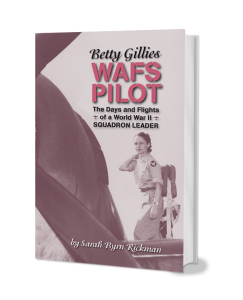 “I feel that the message she would want this book to pass on is to step up, do your job and do it well, and with dignity and grace step down when the time comes. And don’t underestimate the ‘short’ people. Stature comes from within, from honing your skills and doing your job with confidence.”
“I feel that the message she would want this book to pass on is to step up, do your job and do it well, and with dignity and grace step down when the time comes. And don’t underestimate the ‘short’ people. Stature comes from within, from honing your skills and doing your job with confidence.”
To purchase the book, visit amazon.com/Betty-Gillies-WAFS-Pilot-Squadron/dp/1735059501. For more on author Sarah Byrn Rickman’s and her books visit sarahbyrnrickman.com
***.
My grateful thanks to Karen Billing, Staff Writer for the Rancho Santa Fe News, for this fantastic writeup last fall when Flight to Destiny Press released Betty Gillies WAFS Pilot.
The post Betty Gillies, A Trailblazer in Women’s Aviation appeared first on Sarah Byrn Rickman.
July 22, 2021
Wally Funk, 3 Guys, Ride Blue Horizon to Doorstep of Space
Normally a late riser —never before 8 — I set my alarm this morning for 5:45. My friend and first fight instructor, Wally Funk, was lifting off on a Space Flight and I wanted to watch.
Wally posing in a space suit.
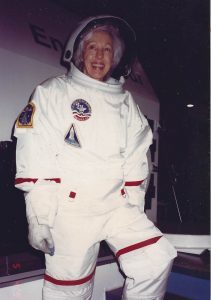
I was on the computer by 6:15 — 7:15 in Van Horn, Texas, where she and her three companions, including flight sponsor Jeff Bezos, were about to board Blue Horizon for the 11-minute flight.
In 1961, Wally was one of the Mercury 13, the skilled women pilots who underwent the same series of physical and psychological tests as those given to the Mercury 7, the male pilots who were America’s first astronauts. The tests were to determine if women, too, might be good candidates for space flight. These 13 passed with flying colors.
No Space Flight for the WomenNASA didn’t sponsor the tests. Private funding paid for the testing. The United States was not yet ready for women space pilots and crew. So the tests were halted. Those 13 women were never considered for the astronaut corps, therefore none of them flew in space — until today. This morning, Wally went on a space flight that took her and her three male companions above the Kármán line — an altitude of 100 km (62 mi) above sea level, which is conventionally used as the start of outer space in space treaties and for aerospace records keeping. [https://en.wikipedia.org/wiki/Outer_s...]
Wally, Jeff & Mark Bezos, Oliver Daemen ‘Touch’ Brink of SpaceHaving achieved that goal, the space capsule carrying them came right back down as planned.
The Mercury 7 astronauts were Alan Shepard, Gus Grissom, Scott Carpenter, Deke Slayton, Wally Schirra, Gordon Cooper and John Glenn — who became the first man to orbit the Earth — February 20, 1962.
The first American woman to fly in space was mission specialist Sally Ride, June 18, 1983. Eileen Collins was the first women to pilot the Space Shuttle — in 1995 aboard STS-63. She went on to be the first female commander of a U.S. Spacecraft on Shuttle mission STS-93, launched in July 1999. Many women astronauts have followed these two female space pioneers. Women now make up approximately a third of the U.S. astronaut corps.
52nd Anniversary of the July 20,1969, Moon LandingJuly 20, 2021, is the 52nd anniversary of the first Moon Landing, — July 20, 1969. Today, Wally joined the “women in space corps”. And this year — 2021 — marks the 60th anniversary of the Mercury 13. Jerrie Cobb was tested in 1960. Her success brought about the need to test more women. Wally and the other 11 were tested between January and August 1961. They were Gene Nora Stumbough Jessen, Bernice “B” Steadman, Rhea Hurrle Allison Woltman, Irene Leverton, Myrtle Cagle, Janey Hart, twins Marion and Jan Dietrich, Jerri Sloan Truhill, Sarah Gorelick Ratley, and Jean Hixson. Thus: the Mercury 13.
Wally and Sarah at Space Camp, Huntsville, Alabama, May 1991I met Wally at Women in Aviation in March 1991. 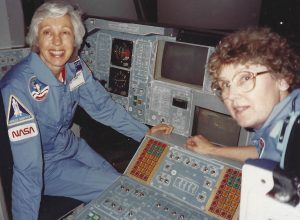
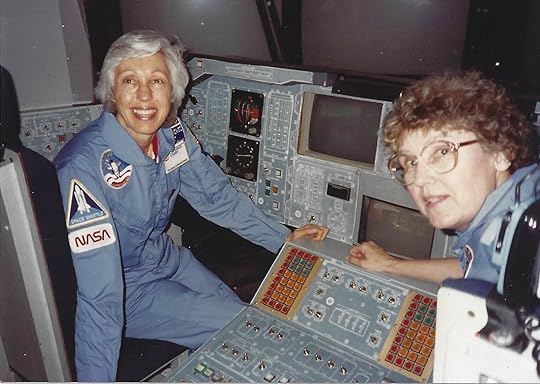
 Learning that she was currently living in my city of residence, Dayton, Ohio, and teaching flying at a small airport on the northwest side, I talked to her about lessons. I started flying with her April 1, 1991, in a two-seat Cessna 152. We took a few days off in May to attend Space Camp in Huntsville, Alabama (my husband thought I was nuts!) and then flew through June.
Learning that she was currently living in my city of residence, Dayton, Ohio, and teaching flying at a small airport on the northwest side, I talked to her about lessons. I started flying with her April 1, 1991, in a two-seat Cessna 152. We took a few days off in May to attend Space Camp in Huntsville, Alabama (my husband thought I was nuts!) and then flew through June.
Then life got in the way for both of us. For me, flying was an expensive pastime. Wally completed the work that had brought her to Dayton and was moving back to Texas. I did, however, take my son out to the airport for a lesson with Wally for his 23rd birthday, August 18, 1991.
My Son Texted Me — ‘Wally Is Going to Space!’When the news came a couple of weeks ago about Wally’s pending space flight, he texted me. “Mother, have you heard? Wally is going to Space!” He delighted in telling his friends that he had “flown” with none other than Wally Funk — yes, THAT Wally Funk.
Wally and I remain friends. Today, we see each other as fellow members of Women in Aviation, International, and of the Ninety-Nines, the Organization of Women Pilots. I DID finally get my pilot’s license — 20 years later. Emerson Stewart III, at Red Stewart Airfield in Waynesville, Ohio, taught me how to fly a sweet little tandem, two-seat Aeronca Champ — yellow with a red belly. I joined the Ninety-Nines, a longtime dream of mine.
I was SO into Wally’s flight today because — like all her many friends — I knew it was her lifelong dream and desire to fly in space.
She’s Done It! And She Wants to Go Again!For the Mercury 13, 1961 was the wrong time.
When the Mercury 13 underwent testing, the public wasn’t even aware that — in World War II — 1,102 women pilots had actually flown airplanes for the Army Air Forces. For two years, they flew everything from puddle jumpers to fighter aircraft as well as a few bombers. Why were we talking about sending women into space, was still the attitude. Women belonged in the kitchen!
But we showed ’em gals. The WASP of WWII; the Mercury 13 – accomplished pilots all; the women military pilots who have been flying since the mid ’70s; the women airline pilots who also began to fly in the ’70s; the women astronauts who have flown in space since 1983; women attending military academies; female Army and Air Force Generals and Navy and Coast Guard Admirals.
Choice, STEM, Flight, Today’s Girls Have It All!And today, our daughters and granddaughters have STEM, where they can study science, technology engineering and math — and anything else they choose to study — and not be the lone female in the class.
It’s been awhile since the ’70s and “We’ve Come a Long Way, Baby,” but we’re doin’ it ladies! And Wally did it for all of us today!
You Go Girl!!!
Thank you for reading my Blog / Newsletter and thank you for reading my books. Click here to see them on Amazon.
The post Wally Funk, 3 Guys, Ride Blue Horizon to Doorstep of Space appeared first on Sarah Byrn Rickman.
July 2, 2021
Watch “Six WAFS Up Close and Personal” Wednesday Night
You are invited to join me — via ZOOM — Wednesday, July 7, at 7 Eastern, 6 Central, 5 Mountain, and 4 Pacific Daylight Time for a showing of my documentary film, Six WAFS Up Close and Personal, courtesy the International Women’s Air & Space Museum (IWASM).
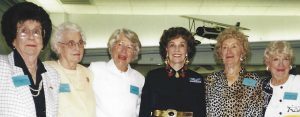
From left: WAFS ‘BJ’ Erickson, Gertrude Meserve, Nancy Batson, Florene Miller, Teresa James, and Barbara Poole
Japan’s surprise attack on Pearl Harbor, Hawaii, December 7, 1941, caught the United States without sufficient men and machines, pilots and airplanes, armament, and everything else needed, first, to defend our country and then to fight the enemy.
New training aircraft were coming off the assembly lines like clockwork at U.S. factories, but moving the planes to the flight training fields presented a problem. All the qualified male pilots had been re-assigned to combat readiness units. Finding men to ferry those planes to the training schools was a problem. Training young men who enlisted to fly for their country slowed to a standstill.
28 WAFS Pilots to Fly WWII Trainer AircraftThe Ferrying Division, Air Transport Command — the unit responsible for moving all U.S. military aircraft — hired 28 experienced women pilots. These women — the WAFS [Women’s Auxiliary Ferrying Squadron] — immediately went to work picking up those trainers at the factories and ferrying (flying) them to the flight training fields. There, young men and their instructors anxiously awaited delivery of those planes so that the fledgling pilots could be taught to fly “THE ARMY WAY.”
What those 28 women did was just the beginning of the work women pilots performed to help America win World War II
IWASM has launched a one-hour educational and informative virtual program series in which they bring to life the stories, legends, narratives, and various other accounts of the lives and accomplishments of women aviators. This includes the female pilots who took to the air in the early years —not long after “man’s first flight” in 1903 — on up to the present and including the women who have gone into space and hope to go there in the future.
IWASM Has Many Women in Aviation & Space Stories!I’ve been asked to help them present these stories by talking about these women pilots of World War II who I have been studying and writing about for 30 years. There is so much to tell. Those 28 WAFS would eventually grow into a band of 1,102 women pilots who, as a group, contributed much to the U.S. winning the war.
Those 1,102 women did not fly combat. They spent the war performing a myriad of flight-related jobs here in the United States in order to free men to go abroad and fight. Those 1,102 women who flew for the U.S. in WWII came to be known as WASP [Women Airforce Service Pilots].
I met these six original WAFS in June 1999. 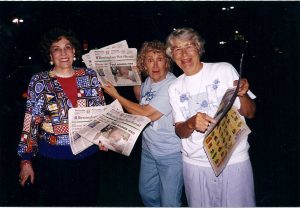 Nancy Batson Crews, one of the six, made it all possible. She held a reunion for the remaining WAFS. There were nine still alive and six of them came: Teresa James, Barbara “BJ” Erickson, Gertrude Meserve, Florene Miller, Barbara Poole, and Nancy their hostess.
Nancy Batson Crews, one of the six, made it all possible. She held a reunion for the remaining WAFS. There were nine still alive and six of them came: Teresa James, Barbara “BJ” Erickson, Gertrude Meserve, Florene Miller, Barbara Poole, and Nancy their hostess.
From left: Florene, Teresa, Nancy.
WAFS Ferried Everything from Trainers to Fighters
I interviewed them and filmed them with my hand-held video camera. I listened as they told their incredible stories — how they became WAFS and the many different flights they made between September 1942 to December 1944, when they were disbanded. All the WAFS had a minimum of 500 hours when they joined up. Most had far more. They paved the way and other young women followed them — ultimately numbering 1,102.
First, the women ferried those primary trainers. As the need for bigger, more powerful warplanes surfaced, they flew the single engine, single seat P-51 and P-47 fighter aircraft. They flew twin-engine transport planes and bombers and a few qualified in the four-engine B-17 bomber.
I filmed the six in order to get their incredible stories on film for posterity. I also sought to document first-person narratives for my first book about these incredible women, The Originals: The Women’s Auxiliary Ferrying Squadron of World War II. Ten more books, mostly biographies, have followed.
‘Six WAFS Up Close and Personal’ From IWASMIWASM is where I first learned about the WASP and the WAFS when the museum opened in Centerville (suburban Dayton) Ohio — a block and a half from where I lived. I met my first WASP (Nadine Nagle) and first WAFS (Nancy Batson Crews) through IWASM.
Today, IWASM is located at Burke Lakefront Airport (at the lower end of Lake Erie), downtown Cleveland, Ohio. Go visit them. You’ll be glad you did!
Please join me and the IWASM crew Wednesday July 7 to learn about these six women and the other qualified women pilots with whom they flew. Please see the link below.
Here’s the LINKClick here to sign up for Wednesday’s free program
From Sarah: Thank you for reading my books! Click here to see them on Amazon
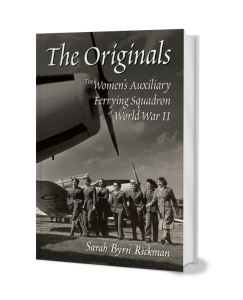
The post Watch “Six WAFS Up Close and Personal” Wednesday Night appeared first on Sarah Byrn Rickman.
June 19, 2021
Bessie Coleman Earned Pilot’s License 100 Years Ago
When Bessie Coleman earned her pilot’s license on June 15, 1921 — 100 years ago — she was the first Black individual, man or women, to do so.
Bessie Coleman wanted to fly, to feel the wind in her hair and on her face. She wanted to hear the sound of the wind singing in the wires 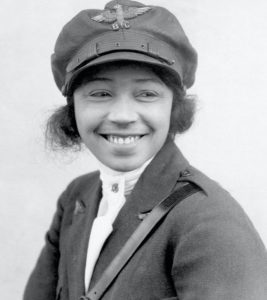 that held the early aircraft together. What was it like to leave the ground? What was it like to feel the thrust of the engine that lifted the pilot along with the aircraft?
that held the early aircraft together. What was it like to leave the ground? What was it like to feel the thrust of the engine that lifted the pilot along with the aircraft?
Not permitted to take flying lessons in America because of her color, Bessie went to France. There, she enrolled in the Ècole d’Aviation des Frères Caudron. In seven months she completed the course. She qualified for her license from France’s renown French Fédération Aéronautique Internationale (FAI).
Bessie ColemanPhoto courtesy the 99s Museum of Women PilotsHer License Dated June 15, 1921Bessie “flew a five-kilometer closed-circuit course twice, climbing to fifty meters, negoatiating a figure eight, landing within fifty meters of the designated spot, and turning off the engine before touching down.” She learned, among other things, how to do tail spins, bank, and loop-the-loops. At that time, the United States didn’t yet license pilots. A French-issued license was accepted world-wide.
“Queen Bess,” as she came to be known, returned home to the United State to become a famous barnstormer. Sadly, Bessie perished April 30, 1926, in a tragic airplane crash.
26 Women Pilots Launch ‘Ninety-Nines’ in 1929Three years after Bessie’s untimely death, what is now the oldest women pilots’ organization in existence was established. On November 2, 1929, 26 women pilots gathered at Curtiss Airport in Valley Stream, Long Island, to discuss forming a group to represent licensed women pilots.
They conducted their business in a hangar above the din of a Curtiss Challenger engine running up as the work of the mechanics proceeded around them. Tea was served from a tool box wagon on wheels.
The women present that November day opted to invite all 117 American women known to hold pilot’s licenses as of that date. Ninety-Nine women opted to join. They established what today is known as the Ninety-Nines, the Organization of Women Pilots. Amelia Earhart, to no one’s surprise, was elected the first president and Louise Thaden vice president.
Today’s 99s Have a Worldwide MembershipToday, the membership is around 6,000 and is international in scope with women pilot members representing more than 40 countries. The Ninety-Nines Museum offers fascinating exhibits that tell the stories of Ninety-Nines members from the number of Charter members,99, to today — and much more. Women like Bessie Coleman and Harriet Quimby, who died long before the 99s was founded, are celebrated for their contributions to aviation and women’s aviation.
It is my privilege to serve as a trustee of the 99s Museum of Women Pilots, located on Amelia Earhart Drive, adjacent to the Will Rogers International Airport in Oklahoma City. Many welcome happenings have come my way because of my affiliation with the Ninety-Nines. On November 2, 2019, I was thrilled to be a part of the 90th celebration of the founding of the Ninety-Nines held at the Museum/Ninety-Nines Headquarters in Oklahoma City.
Marking Bessie’s Brief But Stellar Aviation LifeLast week — Tuesday, June 15, 2021 — the Ninety-Nines Museum of Women Pilots posted this to commemorate the 100th Anniversary of the issuing of Bessie’s private pilot’s license. Click here to download the pdf.
And a new historical novel, A Pair of Wings: The Life of Pioneer Aviatrix Bessie Coleman, was released June 15, the 100th anniversary of her earning her certificate. The author is Carole Hopson.
Women’s aviation is alive and well because of contributions of the women aviators who have gone before us. Please join the Ninety Nines Museum of Women Pilots in celebrating them!
Thank you for reading my blog and please read my books about the women pilots who flew in World War II, the WASP (Women Airforce Service Pilots).
The post Bessie Coleman Earned Pilot’s License 100 Years Ago appeared first on Sarah Byrn Rickman.
May 14, 2021
CAL Awards Finalist: Betty Gillies WASP Pilot
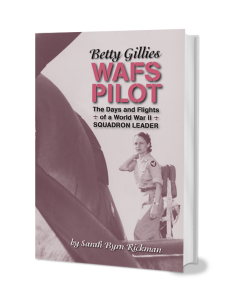 A great week, folks. I’m celebrating! Betty Gillies WAFS Pilot: The Days and Flights of a World War II Squadron Leader has earned two Finalist Awards in the Colorado Authors League (CAL) competition for books published in 2020. The two categories are: “Non-Fiction: Biography, Memoir” and “Fiction/Non-Fiction: Young Adult.
A great week, folks. I’m celebrating! Betty Gillies WAFS Pilot: The Days and Flights of a World War II Squadron Leader has earned two Finalist Awards in the Colorado Authors League (CAL) competition for books published in 2020. The two categories are: “Non-Fiction: Biography, Memoir” and “Fiction/Non-Fiction: Young Adult.
Final award winners will be announced mid-July.
And more good news from CAL. Because COVID greatly reduced all winning authors’ ability to promote their recognized books published in 2019, CAL offered finalists and winners the opportunity to be filmed reading a small portion of our 2019 books in the competition.
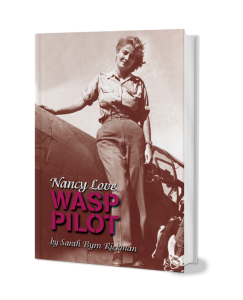 My grandson, Daniel, filmed me reading from my Finalist book in Children’s/Young Adult— Nancy Love WASP Pilot. The video is on YouTube but you can watch it right here. And if you weren’t aware of the Nancy Love Y/A biography, please check it out on Amazon!
My grandson, Daniel, filmed me reading from my Finalist book in Children’s/Young Adult— Nancy Love WASP Pilot. The video is on YouTube but you can watch it right here. And if you weren’t aware of the Nancy Love Y/A biography, please check it out on Amazon!
Both Nancy Love WASP Pilot and Betty Gillies WAFS Pilot are available on Amazon as paperbacks and as Kindle eBooks.
ENJOY!!!
The post CAL Awards Finalist: Betty Gillies WASP Pilot appeared first on Sarah Byrn Rickman.
May 8, 2021
A Mother’s Day Tribute to My Mom
My mother played forward on the team that won the Tennessee girls state championship basketball tournament in 1924!!!
This revelation came as a great surprise to me, because in my day — 30 years later — girl’s high school basketball was a gym class only sport! We did NOT field girls’ teams to play even cross-town rivals like the boys did. It just wasn’t done. Bless TITLE IX, though it came way too late for me.
My first inkling of my mother’s athletic ability surfaced when I was 8. My Dad put up a basketball goal in the backyard. Once it was up, each of us took a turn trying to sink baskets. Mom was ten for ten. I do not remember how many my father or I sank other than each of us needed only one hand to total up our hits. Nuff said.
Not Just Basketball, Golf and Bowling As WellAnd it wasn’t just basketball in which my mother was competitive!! She ran track in high school, and she played soccer. She was awarded a silver track shoe charm her senior year. My recollection is she won the javelin throw. She wasn’t a runner, nor did she play tennis, nor did she swim.
As an adult, she became a good competitive golfer. She was no Babe Didrikson Zaharias (THE reigning women’s championship golfer of the day — whom I greatly admired), but she played 18-holes twice a week in a local golf league from April to October. They didn’t ride in carts back then. The ladies pulled their bag of golf clubs behind them in two-wheeled carts — up and down hills, for 18 holes
When I turned 10, my dad began to teach me to play golf. I, too, pulled a cart with my clubs.
While I was away at college, my mom took up bowling. She prevailed on my dad to try it, and they joined a couple’s league. When I came home from college, I too was invited to try bowling. I joined the women’s bowling team at my place of employment: The Detroit News.
Bridge! She Knew Where Every Card WasMy mother also was one helluva Bridge player. She wasn’t at the Masters’ Point level and she didn’t play Duplicate, but she was SHARP. I tried. I learned to play, but never “got the bug” like she did. Wrong generation. And I didn’t have my mother’s ability to “count the cards.” By the time the second trick was played, my mother knew where every card was.
My mother, you see, also happened to have been a well respected high school math teacher in her post college/pre-motherhood days. Math, it turned out, was her secret weapon, her expertise, her joy.
My mother played the horses! She also played the dogs. I attended many a greyhound race with her. She loved to bet on both the horses and the dogs. Turned out she was a closet gambler and she used her math skills to their fullest extent. She didn’t bet on a horse because of how he flicked his ears or had a cute name. She “figured the Form” — the Racing Form! And I mean REALLY figured it.
“I’ve Got the Horse Right Here!”Remember the song from Guys and Dolls about the horse named Paul Revere? The “morning line” on him was “5 to 9.” Well, my mother knew the lingo. She was one whiz at math. She knew how to pick ’em.
She was the true extrovert in the family. My father was a salesman, so he had to be an extrovert. But he had a studious side. He was a historian and a voracious reader. I inherited both from him.
I still don’t know how they managed to hatch an introvert who can’t “figure out” her own checkbook. And it’s a good thing I didn’t have to depend on my “sales” ability to make it in the workplace. What did I do for a living? I wrote for a newspaper. What do I do now? I write books!
The Math Gene Missed My Generation!Imagine the rude surprise I had when I realized I actually had to SELL those books. I did not manage to inherit my father’s sales ability either. Oops!!!
Fortunately, my two sons inherited their maternal grandmother’s — as well as their engineer-father’s — gift of mathematical excellence!
Happy Mother’s Day “Ma” — as she was known fondly by her two grandsons.
The post A Mother’s Day Tribute to My Mom appeared first on Sarah Byrn Rickman.
April 23, 2021
WAFS Dorothy Scott — Are You Still Interested?
Dorothy Scott earns her wings and flies — this is what she loves. Her country is at war. She joins the Women’s Auxiliary Ferrying Squadron (WAFS) and flies military aircraft for her country. She dies in a fiery crash. She is 23. By the time the war is over, few will remember her. Her story is almost lost.
Her devoted twin brother must go on without her. 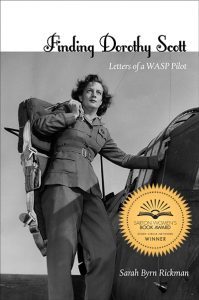 He lives his life — a wife, two sons, grandchildren. His greatest wish is to have Dorothy’s story told. He saved her letters home — written to family during her year of active service. They are the only real documentation of Dorothy’s life. In his final days, he donates her letters to the WASP Archives at Texas Woman’s University.
He lives his life — a wife, two sons, grandchildren. His greatest wish is to have Dorothy’s story told. He saved her letters home — written to family during her year of active service. They are the only real documentation of Dorothy’s life. In his final days, he donates her letters to the WASP Archives at Texas Woman’s University.
I have contacted the Archives about this WASP. An email from the director asks: “Are you still interested?”
“YES!”The letters lie in archival folders, fragile but intact. Experiencing the letters is like taking literary communion. They beckon “take, read.” On the first page is the winged insignia of the Air Transport Command. The date: Thanksgiving, 1942. “Dear Mom, to attempt to set down in writing all the events of the past two weeks seems a Herculean task, but here goes.”
Dorothy’s voice, silent since December 1943, speaks to this author, who listens.
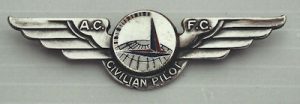
Dorothy Scott was one of the first 28 women to fly actively for America in wartime. Civilians, they were hired by the military to ferry small trainer aircraft from the factories to the World War II training fields. By December 1943, she is on the fast track to learn to fly the Army’s swift, powerful, single-engine, single-seat (no copilot or instructor) fighter aircraft.
On the third day of fighter school, Dorothy, flying in a training airplane with an instructor, is on final approach, preparing to land. A fellow student, flying a fighter, approaches from above. He overtakes Dorothy’s slower plane. The tower fails to warn both pilots. He comes down on top of her aircraft. All three pilots die.
The day I began reading Dorothy’s letters, Finding Dorothy Scott was conceived. Today, thanks to my editor Joanna Conrad and Texas Tech University Press, Dorothy’s story lives. Subsequently, it won seven literary awards.
Hear Dorothy’s Voice in This Letter to Her Father“When we landed, we were mobbed. Hearing me on the radio, they knew it was girls. In five minutes we were dated up for the rest of the week. We were escorted to the officers club. During dinner we couldn’t eat a bite for being talked to. We planned to take a 7:15 bus to Memphis, but during dinner our escorts, a major and a captain, said they would fly us to Memphis. We could catch the earlier 11 pm airliner home instead of the one at 4 in the morning.
“It was all planned. The Major and Florene and the Captain and I climbed into two planes. Remember, Pop, it was night. To do it up right, we made a formation take off between smudge pots lining the runways. I’ll never in all my life forget that ride! We were nearly touching the other plane — guided only by small lights and the flare of the exhaust. I was so busy watching the other plane I forgot to look around. When I did, the rapidly fading field looked like a million small fires.
“We cruised in close formation, then we separated. All of a sudden we were in a snap roll! I tightened my belt. From there to Memphis, I had trouble telling when we were right side up and when we weren’t. Loops, slow rolls, Immelmans. It was a clear night but dark, so the stars above looked a lot like the small clearing fires below. I had to check the instruments to believe anything.
Memphis a Luminous Patch in the Sky!“Memphis, from a distance, looked like a patch rug painted with luminous paint. What a sight! As we drew near it got brighter. We came in right over it at 6,000 feet and spiraled down. All too soon we landed. We shocked the natives by walking into the Terminal, wearing our flying suits — PANTS! — and on the arms of a couple of handsome officers.
“Oh Pop, after that night ride, anything else was an anti-climax.”
Taken from my 2016 National League of American Pen Women, Inc., Vinnie Ream Award-winning essay and from Chapter Four of Finding Dorothy Scott — containing Dorothy’s letter home describing the spectacular night flight.
Thank you for reading my blog. I hope you will check out Finding Dorothy Scott and my other WASP books on Amazon: https://www.amazon.com/Finding-Dorothy-Scott-Letters-Pilot/dp
The post WAFS Dorothy Scott — Are You Still Interested? appeared first on Sarah Byrn Rickman.

